 By Mark Warburton, Ivory Egg.
By Mark Warburton, Ivory Egg.
It is an odd phenomenon that we spend a lot of time creating as much light as possible in a building, be it from architectural features, lighting effects such as fires, or general lighting, only to spend countless time and energy dimming it down to a suitable and aesthetically-pleasing level.
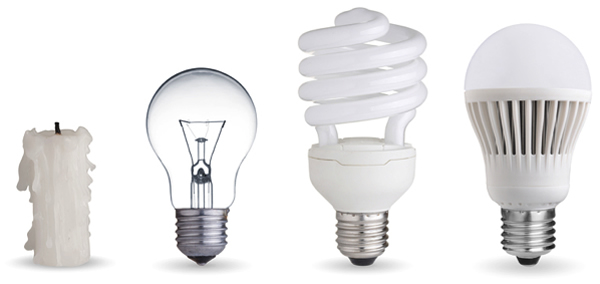
With the transition from incandescent light to light-emitting diode (LED), it is not safe to assume that this process will be problem-free, and with such a wide range of light fittings in the market, how can you guarantee a satisfactory result for your customer?
To better understand the issues, let’s briefly look at how LEDs work and then look at some examples of the best method of control.
LED Lamps
Like any diode, an LED allows current to pass through it in one direction only. Diodes can be used to convert AC current to DC, but an LED is typically used with a DC current.

High-power LEDs used for lighting are made up of an LED and a driver. The characteristic of the diode is such that a linear increase in voltage across it will result in an exponential increase in the current passing through it, so the role of the driver is to ensure that the correct current or voltage is supplied.
LED Drivers
LED drivers come in two formats, namely constant current (CC) or constant voltage (CV). One has a fixed current, the other has a fixed voltage, and it is the configuration of the lamp that determines which is needed. If a large number of LED strings are connected in series, then a CC driver is normally specified. LEDs in parallel will require a fixed voltage, as the current will vary unless additional active devices are used.

Generally, an LED striplight will require a CV driver, whereas LED downlights will use a CC driver. LED drivers are mostly low-voltage, so an external power supply (transformer) will be required but this may be incorporated in the driver as is the case with mains-driven LEDs.
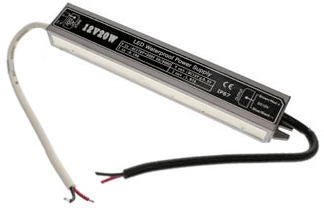
The output from the driver is commonly a PWM (Pulse-Width Modulation) signal which turns the LED on and off at high frequency with a varying width of pulse – the greater the pulse width (or duty cycle), the brighter the light output.
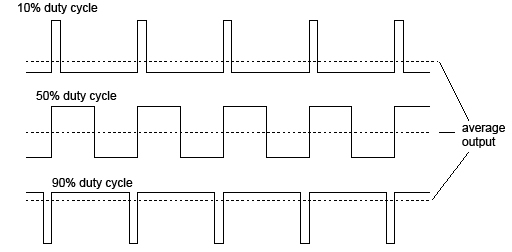
To dim the output, a digital or analogue control signal is sent to the driver, which will then adjust the PWM signal to the LED. This provides a smooth dimming curve and stable light output and is the recommended method for guaranteed results.
In a dimmable mains LED fitting, the driver will be receiving a chopped AC waveform from the dimmer and wlll use this to create the above PWM output for the LED. Depending on the quality of the dimmer, the driver, the mains supply and the actual LED, the results will vary, and although advancements in both driver and dimmer technology mean the issues of flicker and circuits not turning off have largely been solved, it is by no means an exact science.
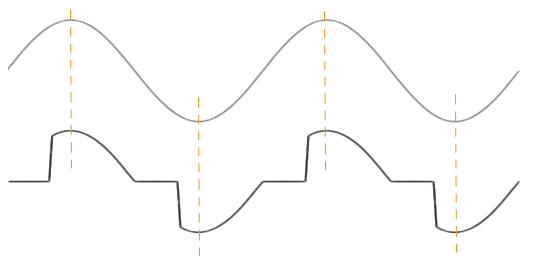
Below are some product examples of how the above principles relate to the world of KNX.
Mains LED Dimming
All of the major KNX manufacturers now promote LED compatibility as part of their universal dimmer line-ups, but not all support it to the same extent. Some have been developed for a specific range of lamps, such as ABB working with Philips Master LED, whereas others have approached the market more generically.
The key thing to watch out for is the inrush current that is generated as the LED fitting turns on. This can be as high as 1A on a 7W fitting, and is the reason why all universal dimmers are downrated when used with LED. For example, the two-channel 400W Theben DMG2T can only drive 60W of LEDs. LED manufacturers rarely publish this information, so downrating the dimmer by 80% is a general rule.
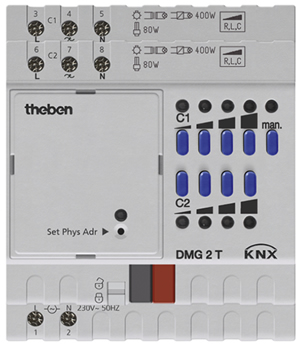
Another consideration is the visible light output throughout the dimming curve. Some LEDs will dim very nicely down to 1%, whereas others will dim to 50%, with a flat output below this. Using a dimmer with adjustable curves or profiles allows for trimming of the light output (this can be set in ETS), but it is always advisable to test the proposed combination of mains LEDs and dimmer first.
Direct KNX LED Drivers
This is by far the most native KNX solution, as the LED driver has a direct connection to KNX. All you need to do is send a (digital) dimming value to the driver via the KNX bus line and it will adjust its LED output.
Zennio and Bilton are the leading manufacturers of this option, and Bilton is launching a range with the transformer built into the driver so that you only need mains and KNX at the fitting. This is definitely one to look out for at Light+Building 2014.

1-10V Control
One of the most common forms of LED dimming is 1-10V. It is very similar to the direct solution above, except the driver uses a 1-10V analogue signal coming from a multichannel dimmer, to determine the light output. This dimmer will have an incorporated relay to turn off the circuit and multiple drivers can be on one output.
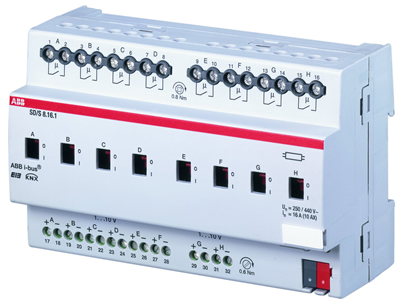
DALI
Drivers with a DALI input work in the same way, except the signal is digital and each driver is addressed as part of the DALI network. A KNX DALI gateway will manage the drivers (up to 64 in a network) allowing for control, error reporting and feedback. As this method is again dimming the output of the driver, the results are very good.
For more information visit www.dali-ag.org
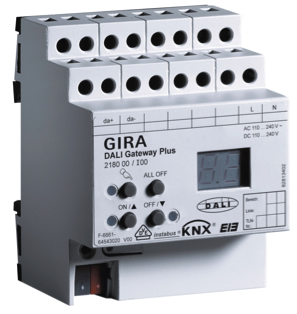
Conclusion
With such a wide range of options it is difficult to make a clear statement about the best solution, as every project is different, as are the expectations of the client or designer.
Understanding the options and having a discussion about the best combination of dimmers, drivers, power supply and LED options, along with testing of the proposed combinations, will ensure that no part is left to chance.
Otherwise the results can be very dim indeed!
Mark Warburton is the Sales Manager for Ivory Egg (UK) Ltd, a supplier of leading KNX products and provider of KNX training courses. Mark is also a regular contributor to KNXtoday magazine.











